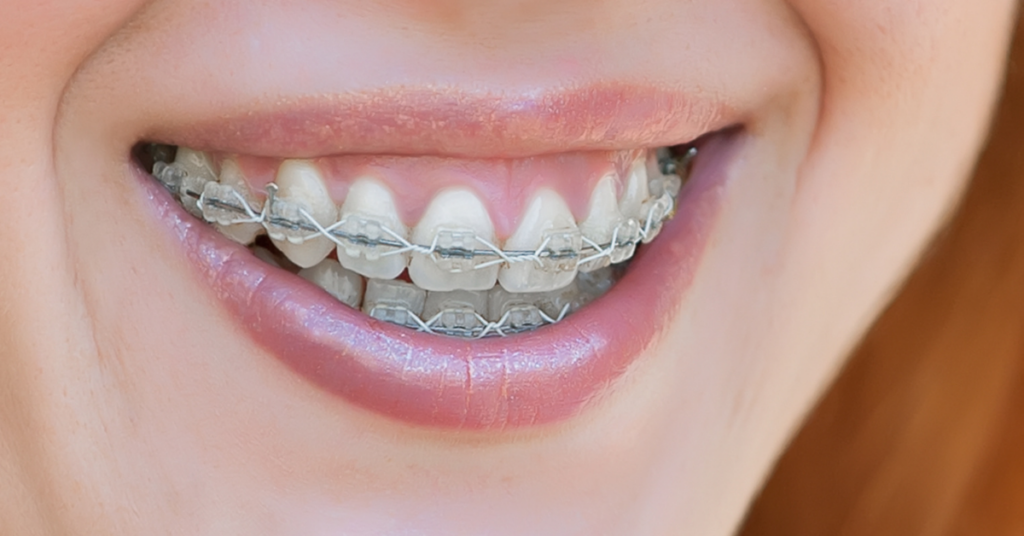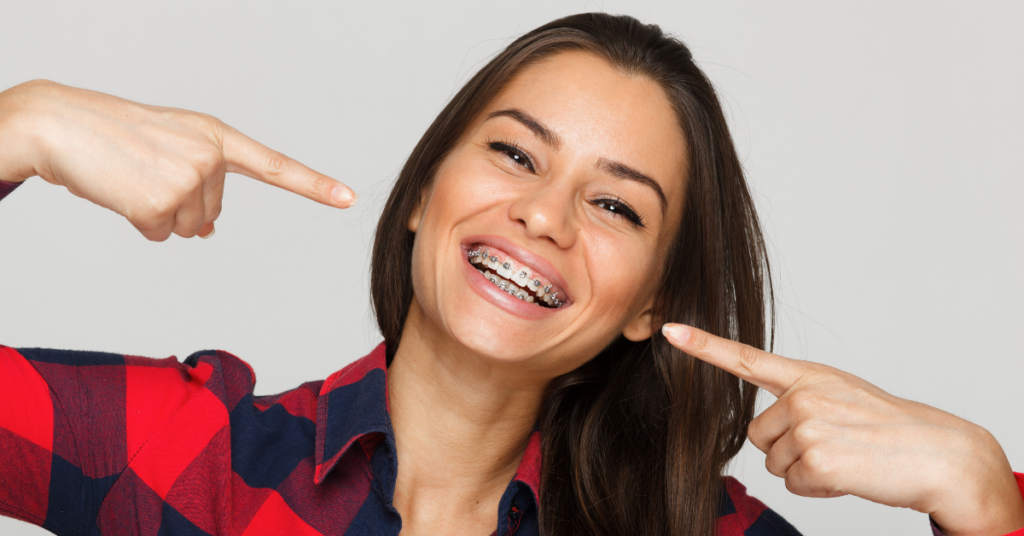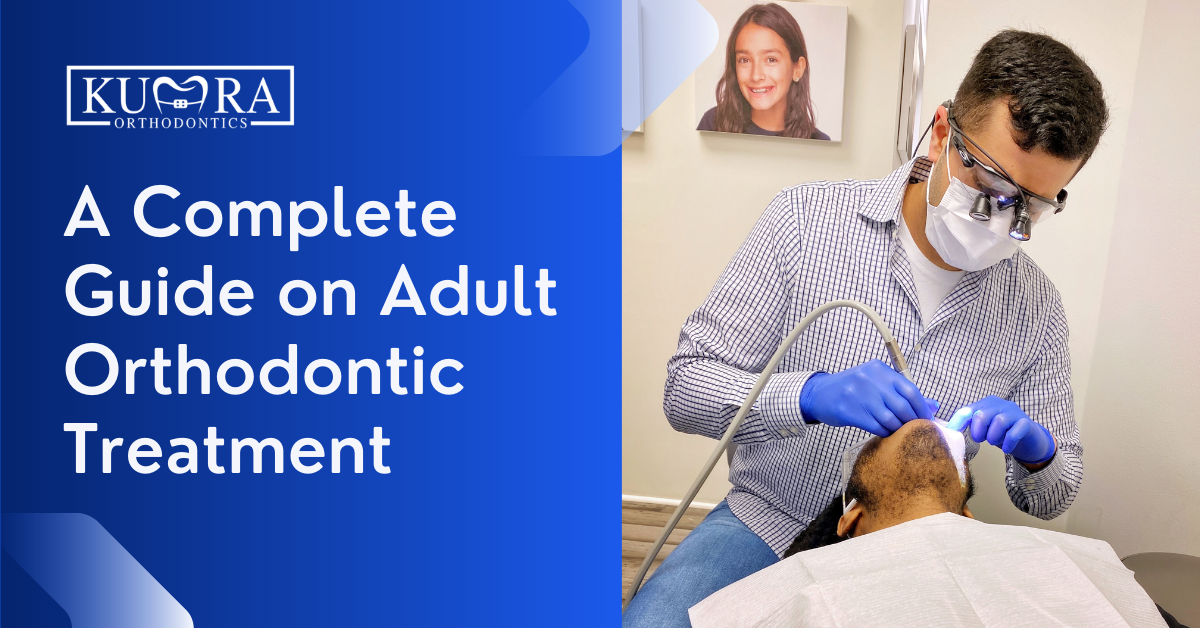Can adults get orthodontic treatment?
Every fourth orthodontic patient today is an adult. Untreated misaligned teeth can lead to tooth decay, gum disease, and difficulties chewing. Orthodontic treatment for adults improves the bite, makes teeth fit better, and reduces the chance of future dental problems.
Orthodontic advancements have made treatment more comfortable and less apparent for patients of all ages. Many modern treatment techniques aim to hide braces in adults to fit any lifestyle better.
What is the best orthodontic treatment for adults?
Orthodontic treatment is still beneficial even for adults. For this reason, orthodontists and other specialists advocate it to reduce the likelihood of adverse outcomes such as jaw issues, gum disease, and tooth decay.
There are a variety of orthodontic treatment options to choose from. Set up a consultation with Kumra Orthodontics to determine the best course of treatment for your situation. That way, you can be confident that the treatment will be tailored to your unique requirements.

6 Orthodontic Treatment Options Adults Can Get
Traditional Braces
Traditional metal braces are a cost-efficient and effective treatment choice for many people. Metal braces effectively treat severe or mild tooth crowding, the majority of bite abnormalities, and spaced teeth, among other concerns. Metal braces have gold or silver brackets connected by o-shaped rubber bands tied around each bracket. Traditional braces are also long-lasting, sturdy, and capable of withstanding the majority of treatment forces.
Among children and teenagers, traditional metal braces are very common. It is also possible for adults to receive them if they are not concerned about having visible brackets on their teeth for an extended period.
Read More: Kinds of Dental Braces and What’s Best For You
Retainers
Retainers are required following orthodontic treatment, especially if you want to ensure that your teeth remain in their optimal alignment. Retainers can be evaluated to see if they need adjustment or repair, regardless of whether you currently wear them.
If you do not have a retainer and have previously had braces, we encourage you to come in for an examination so that we can determine whether or not you need new retainers.
Invisalign
Unlike traditional orthodontic treatment, Invisalign uses a set of clear, removable aligners to straighten the teeth rather than brackets and wires. These aligners are custom-made to fit directly onto the teeth and are nearly undetectable when worn.
They can be removed to eat, drink, brush, and floss without removing the aligners. Due to its unobtrusive and convenient nature, Invisalign is one of the most popular solutions for adult orthodontic treatment available on the market.
Read More: How Does Invisalign Work and What are Its Limitations?
Ceramic Braces
Ceramic braces, also referred to as “clear braces,” are identical to regular metal braces in that they perform the same functions as metal braces. They’re also the same size and shape as traditional metal braces, which is convenient.
On the other hand, Ceramic braces are made up of archwires and tooth-colored brackets, as opposed to silver or gold brackets. These colors are also used for the o-shaped rubber bands that surround each bracket. This enables them to blend in more seamlessly with your natural tooth structure.
Although transparent braces are still visible, many adults and teenagers prefer them to metal braces since they look more appealing.
Lingual Braces
Lingual braces are metal braces that are used to straighten the teeth. The only difference is they are attached to the back of your teeth rather than the front of your teeth. They are the least noticeable type of metal braces, but they can be more unpleasant because they are closer to your tongue.
Veneers
A thin thickness of tooth-colored porcelain is applied to your existing choppers to improve the appearance. They’re a quick and painless solution to treat small, chipped, dull, or discolored teeth, among other things. However, there may be a price to pay for them. In some cases, your dentist may choose to shave off a portion of your natural tooth before placing them.
Needing an orthodontic appointment?
Visit Kumra Orthodontics Washington, DC or Kumra Orthodontics Stafford, VA, and request an appointment with us!
Benefits of Orthodontic Treatments for Adults

Taking Better Care of Your Teeth
The majority of people follow a twice-daily tooth brushing practice to improve their oral health. Nonetheless, reaching the surface of crowded, overlapping, or crooked teeth might be challenging at times. One of the most significant advantages of braces is that they can assist you in straightening your teeth.
Braces operate by providing pressure to the teeth to assist them in moving into a more favorable position in your mouth over time. The maintenance of hygiene practices such as brushing and flossing becomes considerably easier as a result of this. Plaque can be removed in this manner, resulting in a cleaner and brighter grin.
When you brush your teeth properly, you can maintain the health of the enamel on your teeth. This reduces the risk of cavities and gum disease as well.
Fresher Breath
A bad breath can result from not properly cleaning your teeth. It is common for bacteria to accumulate in the mouth when teeth are overcrowded or crooked.
This occurs as a result of food particles becoming stuck between the teeth. When it comes to removing these particles, brushing and flossing treatments become less effective. The benefits of braces include having fresher breath because they can address the sources of bad breath.
Improved digestion
When you wear braces, you minimize the gap between your teeth. Chewing food becomes easier this way, resulting in better digestion. Additionally, you’re breaking down the food into tiny bits before it enters your digestive system.
The stomach can digest food more quickly. As a result, you’ll be less prone to encounter gas, bloating, and other stomach problems.
The way you chew food might be influenced by the manner you bite. For some people with severe bite issues, chewing can even cause pain. The purpose of braces is to straighten your bite as well as prevent the deterioration of your jawbone.
Having difficulty chewing your food properly can have an effect on your nutrition and lifestyle. The result is that key nutrients from food are being left out, leading to obesity or malnutrition.
An easier way to speak
The way your tongue travels against your teeth has an impact on how you pronounce some words. When your teeth are not properly aligned, it can affect your ability to communicate.
When you speak, you may whistle or pronounce some words differently if you have this condition. There is also the possibility that misaligned teeth can cause speech problems, such as a lisp, which is fairly common. Braces can aid in the correction of this problem, resulting in improved speech.
Less Risk of Tooth Injury
Unavoidable accidents can result in a chipped or cracked tooth. This is commonly caused by sports accidents or by simply falling and sliding.
Teeth that protrude more than others are more likely to suffer tooth damage. However, perfectly aligned teeth do not allow for the protrusion of any single tooth from the mouth. You are therefore less likely to damage your teeth in case you have an accident.
Additionally, wearing braces makes eating and drinking more comfortable. You are less likely to bite your tongue or cheek when you speak if your teeth are aligned well inside your mouth.
Stronger Jaw Bones
It is usual for people to lose bone density as they grow older, resulting in their teeth shifting. The position of your teeth has a direct impact on the health of your jaw bone.
While chewing or biting, teeth misalignment can place additional strain on the bone. In later years, this might even result in jaw bone degradation due to stress.
Bacterial buildup in your mouth may also result in bone loss in your jaw. Straightening the teeth can assist in correcting both of these problems.
Other problems with the jaw can arise as a result of incorrect tooth positioning. This includes popping or discomfort in the jaw, as well as sensitivity. For adults, these diseases can also result in chronic headaches and earaches due to their symptoms.
Improved Self-Esteem
For many individuals, wearing braces is primarily for the aim of improving their self-esteem. A beautiful smile can pave the path for increased self-confidence and improved mental wellness.
Following the installation of braces, you will feel less self-conscious about smiling and showing off your teeth. This new self-image has a good impact on your relationships, professional career, and social life, among other things.
Make sure to choose the braces to look that best suit your style, financial budget, and timescale. This will make the procedure of getting braces as an adult much more seamless.
Related: Health Benefits of Braces You Should Know About
Factors Adults Should Consider Before Undergoing Orthodontic Treatment
Age-Related Concerns
The bones become harder and no longer develop as we age, so adjusting to the new placements of the teeth becomes more difficult. As a result, the healing process takes much longer in older patients than in younger individuals.
Biomedical constraints are the term used to describe such age-related limitations. They encompass any linked issues, such as insufficient bone mass between the roots to allow for appropriate blood supply, moderate gingival infections, and age-related bone loss. Consequently, treatment must be highly specialized and tailored to the specific needs of each individual, which has an impact on both the length of time required for treatment and the result.
Bite Correction Issues
For the majority of patients, orthodontic treatment is required to correct their bite. This disorder is referred to as malocclusion in some circles.
The procedure is a bit more problematic in adult patients since, in many cases, not enough space exists in the mouth to make room for the teeth to move, and worn-out teeth exacerbate the problem. In dentistry, such difficulties are referred to as perio-restorative issues, and they are handled to make the patient’s bite functional rather than flawless.
Tooth Extraction Consideration
Although many adults have had multiple teeth pulled in the past, dental restorative procedures can still pose challenges.
This happens because the original extraction sites may not be suitable for tooth relocation unless they are rebuilt with prosthetic bone grafts into the area where the teeth were extracted. Closing such gaps and keeping them closed will only exacerbate the problem as the chances that bones will respond to pressure are substantially lower for adult bones than for growing bones.
Vulnerability
Compared to children, adults getting orthodontic treatment are at a more significant risk of root resorption than their younger counterparts. An example of this is when your body resorbs the root of a tooth, resulting in the tooth becoming unattached. Other factors that contribute to the severity of this problem include family history, oral habits, and the composition of the teeth.
The risk of acquiring Temporomandibular Disorder (TMD), which can develop during orthodontic treatment, is also higher in adult patients. It is critical that your dentist carefully assesses the risks of doing dental restorative treatments before beginning treatment with adult patients.
How much does orthodontic treatment for adults usually cost? (Video)
In many circumstances, orthodontic treatment for adults is not covered by insurance, but your orthodontist may be able to arrange payment plans with you in advance.
On the other hand, adult orthodontic benefits are provided by some insurance plans and can be used for any of the types of orthodontic treatment listed above. Consult with your insurance provider to determine which features are included in your current plan.
Frequently Asked Questions About Adult Orthodontic Treatment
Are adult orthodontics worth it?
Improved smiles acquired through professional orthodontic treatment with braces or Invisalign aligners provide enhanced psychological and physical health benefits and improve one’s quality of life. According to studies, people with healthy, straight smiles convey confidence and self-esteem in personal relationships and social situations, business, and their careers.
A poor bite can also cause unusual jaw pain and pressure referred to as malocclusion. The condition can worsen with time, causing tooth decay, gum disease, difficulties chewing, and abnormal wear of tooth enamel. You may also have headaches, migraines, and TMJ pain. These problems are relieved through expert orthodontic treatment by eliminating the pressure causing the discomfort.
How long do braces take to close gaps?
The movement of a tooth is around one millimeter per month. So, for example, if you have a 5-millimeter gap between your teeth, it will take approximately five months for your teeth to begin to close that gap.
If we were to say anything extremely generic about how long it will take to observe a visible difference in orthodontic treatment with braces, we would say that you will most likely see a drastic improvement in about four to six months.
How long do braces take to strengthen teeth?
While an atypical orthodontic plan for treatment may be 18-24 months, many patients come back only 4-6 months after starting their treatment with a noticeably big smile. This could be because of the confidence they’ve achieved from their treatment.
How long are braces worn?
Typically, a complete set of braces takes 18-24 months to complete.
How does orthodontic insurance work?
Orthodontic insurance differs from dental insurance. There are two different components of orthodontic coverage within dental coverage: lifetime maximum amount and annual or maximum out. In theory, you can get braces once and have a plan that may cover up to 50, 60, or 70% of the cost.
Another thing to remember about orthodontic insurance is that they don’t offer a lump sum of the benefit. They will bleed it out throughout your treatment.
Communicate with Kumra Orthodontics and know more about adult orthodontic treatment
Braces are becoming more popular among adults, and there’s no indication that they will slow down. Technological advancements allow a variety of lifestyle options and strategies to complete treatment quickly and effectively.
Healthy teeth and gums, improved facial structure, and enhanced self-esteem are just a few of the many benefits of correcting your teeth with braces. To ensure the best results, book an appointment with an expert orthodontist today.


